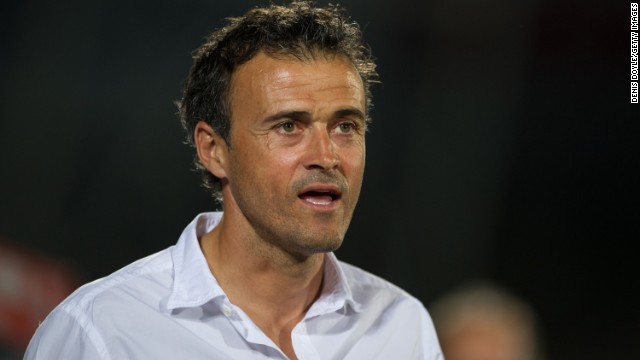Recent Articles
Wednesday, May 21, 2014
Wednesday, May 21, 2014
- 0 Comments
Cut out tomatoes to avoid body odour. That's the message from a chemist and physician, who had a personal reason for embarking on a ground-breaking study of a process worth around £640 million to the UK deodorant industry.
In a paper published in the journal Medical Hypotheses, Dr Charles Stewart explains how body odour is determined partly by genetics which control the degree of sweating from the armpit glands and the amount of sweat, and by the presence of bacteria such as Corynebacterium that live on the skin.
As he explained to the Mail: 'We have long known that these bacteria turn armpit sweat into foul odours - by breaking down proteins in the sweat into smelly compounds.'
As he explained to the Mail: 'We have long known that these bacteria turn armpit sweat into foul odours - by breaking down proteins in the sweat into smelly compounds.'

The oil contains terpenes, substances that give fruit and vegetables their smell and flavour
Some people are fortunate that their genes stop their armpit sweat glands working in this way, so they do not smell. 'This is common in the Far East, especially Korea. However, most Westerners sweat from their armpits, and may smell.'
But he believes it's not just genetics and poor hygiene that are to blame. It's tomatoes.
Dr Stewart has worked for more than two decades with drug companies developing treatments for skin conditions ranging from eczema to cancer. His tomato discovery was prompted by the 2007 heatwave - when colleagues would open windows wide if he was there.
More...
- ME AND MY OPERATION: Tiny cushion in your knee that helps you avoid drastic surgery
- Are we being told the whole truth about the new 'wonder' stroke drug? Worrying side-effects. Missing emails. And a very troubling question about the alternative to warfarin
- Why do GPs fail to spot bowel cancer in young people like Stephen - until too late?
Embarrassed, he knew the problem was his body odour, but he couldn't shift it despite using generous quantities of soap. Then he noticed that tomato stalks are filled with an oil that smells like sweat and wondered if they were the culprit.
The oil contains terpenes, substances that give fruit and vegetables such as oranges, lemons and hops their smell and flavour. When Dr Stewart stopped eating tomatoes his problem disappeared. In 2013, he added tomatoes and other terpene-rich foodstuffs to his diet.

Body odour is determined partly by genetics which control the degree of sweating from the armpit glands
In one experiment he ate four large tomatoes and found that the under-arm odour had reappeared, despite sticking to the same personal hygiene regimen. The odour lasted for seven days. 'It is really surprising the odour can last so long, after one meal,' says Dr Stewart. 'But it means people who eat tomatoes and tomato products always have a risk of smelling when they sweat.'
While he doesn't know how much they'd need to eat a day for this effect, as little as 50 to 100g might be enough. He is yet to investigate if cooking the tomatoes makes a difference.
He believes the reason terpene-containing compounds may play a role in body odour is due to the way they are broken down by enzymes, producing chemicals that act on the antioxidant compound lycopene, found in tomatoes. This in turn produces other chemicals known to contribute to how the body smells.
A report published in the journal Experimental Dermatology in 2012 concluded that certain chemicals linked to body odour were caused by specific foods. The report analysed previous studies showing that a compound in fish oil was linked to body odour.
Dr Stewart says that one outcome of his work is that cutting out tomatoes and paying attention to good personal hygiene could eliminate need for deodorants.
Source:Daily Mail
By LIZZIE PARRY
Electronic cigarettes can help smokers kick the habit boosting quitting rates by 60 per cent compared with nicotine patches, gum or relying on will power alone, new research has found.
The findings, published today, follow a survey of 5,863 smokers in England who attempted to stop smoking without aid of prescription medication or professional support.
Of those using e-cigarettes, a fifth reported having quit 'real' cigarettes at the time the study was carried out.
The research, published in the journal Addiction, suggests that e-cigarettes could play a positive role in reducing smoking rates, say experts.

A survey carried out by a team at the University of London found a fifth reported having 'quit' real cigarettes after using the electronic alternative
Study leader Professor Robert West, from University College London, said: 'E-cigarettes could substantially improve public health because of their widespread appeal and the huge health gains associated with stopping smoking.
'However, we should also recognise that the strongest evidence remains for use of the NHS stop-smoking services.
'These almost triple a smoker’s odds of successfully quitting compared with going it alone or relying on over-the-counter products.'
More...
- Are e-cigarette smokers at risk from superbugs? Vapour helps deadly bacteria to thrive, say scientists
- The killer pimple: Doctors warn of aggressive form of skin cancer which is six times more likely to kill if it is not removed within two months
- Grandfather discovers he has lung cancer after blundering hospital sends test results to his home address instead of his doctor
The same team, chiefly funded by Cancer Research UK, also found that most e-cigarette use involved first-generation ‘cigalike’ products rather than newer devices that use refillable cartridges and a wider choice of nicotine concentrations and flavours.
Co-author Dr Jamie Brown, also from University College London, said: 'We will continue to monitor success rates in people using e-cigarettes to stop smoking to see whether there are improvements as the devices become more advanced.'

The study found the e-cigarettes are more effective in helping someone kick the habit than nicotine patches and gum
Prof West acknowledged that some quitters may want to keep using e-cigarettes indefinitely, and it was not clear whether or not this carried long-term health risks.
But he added: 'From what is known about the contents of the vapour these will be much less than from smoking.
'Some public health experts have expressed concern that widespread use of e-cigarettes could "re-normalise" smoking.
'However, we are tracking this very closely and see no evidence of it.
'Smoking rates in England are declining, quitting rates are increasing and regular e-cigarette use among never smokers is negligible.'
Alison Cox, Cancer Research UK’s head of tobacco policy, said: 'Smoking is the largest preventable cause of cancer and accounts for more than one in four cancer deaths in the UK - so helping smokers to stop is a vital contribution to the health of the UK.
'E-cigarettes may have a role in helping people to quit smoking but while the rapid rise in their popularity suggests a real opportunity, the evidence for their effectiveness is so far limited.
'Cancer Research UK is funding much-needed research into e-cigarette use to help inform policy development and individuals’ choices, and research such as this is helping to paint a clearer picture.'
'E-CIGARETTES ARE A GATEWAY TO NICOTINE ADDICTION IN YOUNGSTERS' SAY SCIENTISTS WHO CLAIM THEY ARE OPENING A NEW TOBACCO MARKET

E-cigarettes are battery-powered devices marketed as a way of helping people quit smoking
Electronic cigarettes are battery-powered devices which simulates smoking.
The design was patented in 1963, and uses a heating element known as an atomiser that vaporises a liquid solution.
Some e-cigarettes contain a mixture of nicotine and flavourings, will others release a flavoured nicotine-free vapour.
They are sold in flavours like chocolate and strawberry that are banned in conventional cigarettes because of their appeal to young people.
The devices are largely designed to look like cigarette and are marketed as a method of helping people quit the habit.
But experts have widely debated the benefits of e-cigarettes.
A recent study by scientists at the University of California's Centre for Tobacco Control Research and Education in San Francisco has shown teenagers who use the battery powered devices are more likely to smoke traditional cigarettes and less likely to quit smoking, the research showed.
As the popularity of e-cigarettes - promoted as a way to help people quit smoking - increases, scientists have found that ‘the wild west marketing of e-cigarettes is not only encouraging youth to smoke them, but also it is promoting regular cigarette smoking among youth’.
'Despite claims that e-cigarettes are helping people quit smoking, we found that e-cigarettes were associated with more, not less, cigarette smoking among adolescents,’ said lead author of the study Lauren Dutra.
She added: ‘E-cigarettes are likely to be gateway devices for nicotine addiction among youth, opening up a whole new market for tobacco.’
A study of nearly 40,000 youngsters in the U.S. found that e-cigarette use among school students doubled between 2011 and 2012, from 3.1 per cent to 6.5 per cent.
Source:Daily Mail
Sandy Huffaker for The New York Times
SAN DIEGO – The last match of the tournament had all the elements of a classic showdown, pitting style versus stealth, quickness versus deliberation, and the world’s foremost card virtuoso against its premier numbers wizard.
If not quite Ali-Frazier or Williams-Sharapova, the duel was all the audience of about 100 could ask for. They had come to the firstExtreme Memory Tournament, or XMT, to see a fast-paced, digitally enhanced memory contest, and that’s what they got.
The contest, an unusual collaboration between industry and academic scientists, featured one-minute matches between 16 world-class “memory athletes” from all over the world as they met in a World Cup-like elimination format. The grand prize was $20,000; the potential scientific payoff was large, too.
One of the tournament’s sponsors, the company Dart NeuroScience, is working to develop drugs for improved cognition. The other, Washington University in St. Louis, sent a research team with a battery of cognitive teststo determine what, if anything, sets memory athletes apart. Previous research was sparse and inconclusive.
Yet as the two finalists, both Germans, prepared to face off — Simon Reinhard, 35, a lawyer who holds the world record in card memorization (a deck in 21.19 seconds), and Johannes Mallow, 32, a teacher with the record for memorizing digits (501 in five minutes) — the Washington group had one preliminary finding that wasn’t obvious.
“We found that one of the biggest differences between memory athletes and the rest of us,” said Henry L. Roediger III, the psychologist who led the research team, “is in a cognitive ability that’s not a direct measure of memory at all but of attention.”
 Sandy Huffaker for The New York TimesJonas von Essen, left, and Andi Bell during their match in the Extreme Memory Tournament.
Sandy Huffaker for The New York TimesJonas von Essen, left, and Andi Bell during their match in the Extreme Memory Tournament.
The Memory Palace
The technique the competitors use is no mystery.
People have been performing feats of memory for ages, scrolling out pi to hundreds of digits, or phenomenally long verses, or word pairs. Most store the studied material in a so-called memory palace, associating the numbers, words or cards with specific images they have already memorized; then they mentally place the associated pairs in a familiar location, like the rooms of a childhood home or the stops on a subway line.
The Greek poet Simonides of Ceos is credited with first describing the method, in the fifth century B.C., and it has been vividly described in popular books, most recently “Moonwalking With Einstein,” by Joshua Foer.
Each competitor has his or her own variation. “When I see the eight of diamonds and the queen of spades, I picture a toilet, and my friend Guy Plowman,” said Ben Pridmore, 37, an accountant in Derby, England, and a former champion. “Then I put those pictures on High Street in Cambridge, which is a street I know very well.”
As these images accumulate during memorization, they tell an increasingly bizarre but memorable story. “I often use movie scenes as locations,” said James Paterson, 32, a high school psychology teacher in Ascot, near London, who competes in world events. “In the movie ‘Gladiator,’ which I use, there’s a scene where Russell Crowe is in a field, passing soldiers, inspecting weapons.”
Mr. Paterson uses superheroes to represent combinations of letters or numbers: “I might have Batman — one of my images — playing Russell Crowe, and something else playing the horse, and so on.”
 Sandy Huffaker for The New York TimesJohannes Mallow, left, and Gunther Karsten, both of Germany, before their match in San Diego. Mr. Mallow went on to finish second in the tournament.
Sandy Huffaker for The New York TimesJohannes Mallow, left, and Gunther Karsten, both of Germany, before their match in San Diego. Mr. Mallow went on to finish second in the tournament.
The material that competitors attempt to memorize falls into several standard categories. Shuffled decks of cards. Random words. Names matched with faces. And numbers, either binary (ones and zeros) or integers. They are given a set amount of time to study — up to one minute in this tournament, an hour or more in others — before trying to reproduce as many cards, words or digits in the order presented.
Now and then, a challenger boasts online of having discovered an entirely new method, and shows up at competitions to demonstrate it.
“Those people are easy to find, because they come in last, or close to it,” said another world-class competitor, Boris Konrad, 29, a German postdoctoral student in neuroscience. “Everyone here uses this same type of technique.”
Anyone can learn to construct a memory palace, researchers say, and with practice remember far more detail of a particular subject than before. The technique is accessible enough that preteens pick it up quickly, and Mr. Paterson has integrated it into his teaching.
“I’ve got one boy, for instance, he has no interest in academics really, but he knows the Premier League, every team, every player,” he said. “I’m working with him, and he’s using that knowledge as scaffolding to help remember what he’s learning in class.”
 Sandy Huffaker for The New York TimesIn addition to his abilities, Ola Kare Risa of Norway had help in shutting out distractions.
Sandy Huffaker for The New York TimesIn addition to his abilities, Ola Kare Risa of Norway had help in shutting out distractions.
Experts in Forgetting
The competitors gathered here for the XMT are not just anyone, however. This is the all-world team, an elite club of laser-smart types who take a nerdy interest in stockpiling facts and pushing themselves hard.
In his doctoral study of 30 world-class performers (most from Germany, which has by far the highest concentration because there are more competitions), Mr. Konrad has found as much. The average I.Q.: 130. Average study time: 1,000 to 2,000 hours and counting. The top competitors all use some variation of the memory-palace system and test, retest and tweak it.
“I started with my own system, but now I use his,” said Annalena Fischer, 20, pointing to her boyfriend, Christian Schäfer, 22, whom she met at a 2010 memory competition in Germany. “Except I don’t use the distance runners he uses; I don’t know anything about the distance runners.” Both are advanced science students and participants in Mr. Konrad’s study.
One of the Washington University findings is predictable, if still preliminary: Memory athletes score very highly on tests of working memory, the mental sketchpad that serves as a shopping list of information we can hold in mind despite distractions.
One way to measure working memory is to have subjects solve a list of equations (5 + 4 = x; 8 + 9 = y; 7 + 2 = z; and so on) while keeping the middle numbers in mind (4, 9 and 2 in the above example). Elite memory athletes can usually store seven items, the top score on the test the researchers used; the average for college students is around two.
“And college students tend to be good at this task,” said Dr. Roediger, a co-author of the new book “Make It Stick: The Science of Successful Learning.” “What I’d like to do is extend the scoring up to, say, 21, just to see how far the memory athletes can go.”
Yet this finding raises another question: Why don’t the competitors’ memory palaces ever fill up? Players usually have many favored locations to store studied facts, but they practice and compete repeatedly. They use and reuse the same blueprints hundreds of times, and the new images seem to overwrite the old ones — virtually without error.
“Once you’ve remembered the words or cards or whatever it is, and reported them, they’re just gone,” Mr. Paterson said.
Many competitors say the same: Once any given competition is over, the numbers or words or facts are gone. But this is one area in which they have less than precise insight.
In its testing, which began last year, the Washington University team has given memory athletes surprise tests on “old” material — lists of words they’d been tested on the day before. On Day 2, they recalled an average of about three-quarters of the words they memorized on Day 1 (college students remembered fewer than 5 percent). That is, despite what competitors say, the material is not gone; far from it.
Yet to install a fresh image-laden “story” in any given memory palace, a memory athlete must clear away the old one in its entirety. The same process occurs when we change a password: The old one must be suppressed, so it doesn’t interfere with the new one.
One term for that skill is “attentional control,” and psychologists have been measuring it for years with standardized tests. In the best known, the Stroop test, people see words flash by on a computer screen and name the color in which a word is presented. Answering is nearly instantaneous when the color and the word match — “red” displayed in red — but slower when there’s a mismatch, like “red” displayed in blue.
“Memory athletes are a little older on average than college students, so you’d expect them to do worse, because we know this ability declines with age,” said Mary A. Pyc, a psychologist at Washington University who, with Kathleen McDermott and David Balota, rounded out the research team. “But in fact they do better,” staying focused on the colors and blocking out the words. Outside experts familiar with the work say the findings are likely to hold up, given what is known about memory.
“While attentional control is not a direct measure of memory, we know that it certainly serves memory,” said Zachary Hambrick, a psychologist at Michigan State. The skill is crucial in memory competitions, he added, “and it’s one that likely has a genetic component, given what we know about expertise.”
In short, memory champions are not only exceptional at remembering. They’re also experts at forgetting. To put it another way, competitors stumble not when they remember too little but when they remember too much. The new research on extreme memory suggests that remembering and forgetting are not necessarily related in the way it seems, the one the enemy of the other.
 Sandy Huffaker for The New York TimesBig screens were installed to display the competitors’ moves and results for the audience.
Sandy Huffaker for The New York TimesBig screens were installed to display the competitors’ moves and results for the audience.
The Final Showdown
All of that seemed academic when Mr. Reinhard and Mr. Mallow took their places on stage at sundown (well, late afternoon) on a recent Sunday to close out the tournament. The two are good friends who train and travel together. But this was all business, a best-of-nine series with the winner getting a fat check.
“Look, there are spelling bees, there’s poker on TV, there’s hot-dog eating contests — memory contests should be popular; everyone is fascinated by memory,” said the master of ceremonies, Nelson Dellis, 30, the United States champion, who persuaded executives at Dart NeuroScience to co-sponsor the event and who designed the format.
For spectator appeal, Mr. Dellis, a consultant based in Miami, installed large flat screens that displayed the competitors’ every move, as in televised poker.
The first category was words. The two studied 50, all in their native German, taking no more than a minute. The seconds flew, and the pair began entering the words into their computers, which were in turn projected onto the screens so the audience could follow. Mr. Reinhard, dressed all in black, was in motion, rocking in his chair, jerking this way and that, as if physically touring his memory palaces; he jumped out to an early lead, with 43 words correct and time ticking down.
Mr. Mallow, still stuck at 16, looked nearly meditative, poking at his computer in a way that seemed almost leisurely. He’d been here before; only an hour or so earlier, he came back from a 3-0 deficit in the semifinals against the current world champion, a Swedish wunderkind named Jonas von Essen. Mr. Mallow can start slow and finish like Usain Bolt.
Yet it wouldn’t happen this time. After losing the words test, Mr. Mallow won the numbers category, but in the cards match Mr. Reinhard was fast and meticulous, arranging his cards in order on his computer in practically no time. He then won names and soon the match, and the tournament. The crowd exhaled, and Mr. Reinhard jumped to his feet and pumped his fists, letting his head roll back in relief. “I’m happy,” he called out to the audience, “happy and — and exhausted.”
In all it had been a weekend that none of the attendees — whatever their Stroop abilities — is likely to forget.
Source:The New York Times
LOS ANGELES — The Walt Disney Company, scrambling to capitalize on unrelenting consumer interest in anything related to “Frozen,” has disclosed plans for an ice skating spectacular based on the blockbuster film that will begin touring arenas in September.
The Disney on Ice production of “Frozen” will be the skating equivalent of a touring Broadway musical, requiring a cast of 39 performers and nine tractor-trailers to move from city to city.Feld Entertainment, which holds the license for Disney on Ice, said patrons could expect a blizzard created by 20 snow machines, a stage inspired by a six-sided snowflake and towering video projection panels that, among other things, would simulate the movie’s jagged North Mountains. The tour will start in Orlando, Fla.
“Frozen,” with its Broadway-style score and modernized princess story (no prince saves this day), has become a once-in-a-generation juggernaut — the kind of movie property that rains profits for years through tie-ins and reminds Wall Street of the value of the high-risk film business. A winner of two Academy Awards, “Frozen” has taken in more than $1.2 billion worldwide since its November release and is still playing in countries like Japan, where it has been No. 1 for the last 10 weeks.
The soundtrack has sold more than 2.7 million copies in the United States alone, and DVD and digital download sales have been among the best Hollywood has ever seen. As for merchandise sales, most major retailers did not see “Frozen” coming, keeping advance orders light and quickly selling out of themed items as a result. (Disney itself was caught off guard; it initially played down the movie’s music, for instance, worrying that children had grown too sophisticated for musicals.)
The speedy arrival of a Disney on Ice version of “Frozen” indicates the degree to which the entertainment giant is now racing to take advantage of the movie’s popularity. To meet retail demand, Disney Consumer Products has airlifted “Frozen” apparel from Chinese factories, forgoing cheaper but slower ocean transport. The company also has a fleet of new “Frozen” apps on the way and is developing a New York stage show and concepts for theme park rides.
“This is definitely up there in terms of our top, probably, five franchises,” Robert A. Iger, Disney’s chief executive, told analysts on May 6 in response to questions about how long “Frozen” fever could last. “So you can expect us to take full advantage of that over the next five years, I would guess.”
Feld Entertainment has produced Disney on Ice tours since 1981 in the United States and since 1987 overseas. Nicole Feld, a producer of the “Frozen” show, said her company had practically begged Disney in recent years to focus more intently on animated movies that include full-blown musical numbers, a crucial skating show ingredient. “It’s harder to create these live experiences than most people think,” she said. “What works live is not necessarily what works on film. You also can’t have a lot of dialogue in an arena setting.”
She said that performing “Frozen” as a live event “will make kids and their parents feel like they are actually trekking up those mountains and experiencing the storm inside Elsa,” referring to the film’s tormented princess.
Patty Vincent, the director of “Frozen” on ice, noted that the Feld creative team has closely collaborated with John Lasseter, chief creative officer at Walt Disney Animation Studios, and the film’s directors and producers. “Their input has been extraordinarily helpful as we try to exceed the very high fan expectations,” Ms. Vincent said. “They helped us with Elsa’s style of movement — balletic, vertical — and how it differs from Anna, who is more playful and horizontal.” (Mr. Lasseter said in an email that “it means so much to us that they’re creating the show with all of the heart, humor and beauty of ‘Frozen’ that audiences fell in love with.”)
Disney on Ice shows are typically made up of vignettes from various Disney films — a “Pinocchio” sketch here, a “Toy Story” number there. But the “Frozen” tour, in part because the movie’s story already involves ice, will be 98 percent based on Elsa and her princess sister, Anna, along with pals like Olaf, a wisecracking snowman, and Sven, a loyal reindeer. Mickey Mouse and Minnie Mouse will bookend the show. Rehearsals begin in July and tickets go on sale Tuesday.
Disney on Ice will have six different shows touring the United States for the 2014-15 season, including “Frozen.” Nine skating shows will tour overseas. More than nine million people attended a Disney on Ice production in 2013, according to Feld Entertainment, which is based in Ellenton, Fla., and owns the Ringling Brothers and Barnum & Bailey Circus, among other arena events.
Source:The New York Times
Tuesday, May 20, 2014
Tuesday, May 20, 2014
- 0 Comments
May 19, 2014 -- Updated 1933 GMT (0333 HKT)

Luis Enrique has signed a two-year deal with Barcelona after relinquishing his role at Celta Vigo.
STORY HIGHLIGHTS
- Luis Enrique appointed new manager of Barcelona
- Enrique replaces Tata Martino at Camp Nou
- Former player a huge favorite at Catalan club
- Enjoyed a fine season in charge at Celta Vigo
Follow us at @WorldSportCNN and like us on Facebook
(CNN) -- Barcelona has appointed Luis Enrique as the club's new manager just days after losing out on the La Liga title.
Enrique, who has resigned from his role at Celta Vigo following a successful season in charge, returns to the club where he starred as a player between 1996 and 2004.
The 44-year-old has signed a two-year deal and replaces Tata Martino, who left the club after just one season at the helm.
Barcelona endured a disappointing season, failing to retain its league title and crashing out of the Champions League following a defeat by Atletico Madrid.In a statement, the club confirmed that Enrique was appointed following an endorsement from sporting director, Andoni Zubizarreta.
Atletico also pipped Barca to the league title by securing a final day draw at Camp Nou on Saturday.
Martino's side was also beaten by arch-rival Real Madrid in last month's Copa del Rey final.
His departure, which came following Saturday's draw, raised few eyebrows following a reign perpetuated by rumors of unrest within the camp.
The attention will now turn to Enrique, who guided Celta to an impressive ninth place finish in La Liga.
Enrique, who arrived at the club for the first time as a player in 18 years ago following a move from Real Madrid, became a huge favorite with the club's supporters.
He won two league titles, two Spanish Cups, a European Cup Winners Cup and a European Super Cup during his eight years at the Camp Nou.
Enrique played 300 games for the club, scoring 109 goals and captained the side between 2002-2004 before retiring.
In 2008, the former Spain international coached Barcelona B, winning promotion in his second season in charge before leaving to take over at Italian side Roma three years later.
At Roma, he guided the club to a seventh place finish in Serie A and into the semifinals of the Italian Cup.
He left his post after citing fatigue.
Messi agreed the deal last Friday but put pen to paper on the new contract Monday.The confirmation of Enrique's appointment came shortly after Lionel Messi signed a new deal with the club, which reportedly takes his net annual salary to $27.4 million.
The Argentina striker has had a lean season by his own impossibly high standards, but has still scored 28 La Liga goals in his 30 games.
Messi joined the Catalans in 2000 at the age of 13 and has gone on to win 21 trophies with Barca, including six La Liga titles and three European Champions League crowns.
Barcelona has also announced the signing of Borussia Mönchengladbach goalkeeper Marc-André Ter Stegen, who is expected to become the club's first-choice next seasonThe 26-year was also voted World Player of the Year in four successive seasons, between 2009 and 2012, and will be one of the biggest names at the World Cup in Brazil.
Source:CNN News International
By Matthew Chance, Faith Karimi and Lena Kashkarova, CNN
May 19, 2014 -- Updated 1902 GMT (0302 HKT)
 Pro-Russia armed militants guard a checkpoint in Slovyansk, Ukraine, on Monday, May 19, blocking a major highway to Kharkiv. Tensions remain high across the country's east, where pro-Russia separatists staged a referendum on independence on May 11 and presidential elections are set for May 25.
Pro-Russia armed militants guard a checkpoint in Slovyansk, Ukraine, on Monday, May 19, blocking a major highway to Kharkiv. Tensions remain high across the country's east, where pro-Russia separatists staged a referendum on independence on May 11 and presidential elections are set for May 25.
HIDE CAPTION
Crisis in Ukraine
STORY HIGHLIGHTS
- NEW: Obama administration skeptical about Putin's order
- NATO says withdrawal would be "first step to de-escalating the situation"
- Russia has said troops were conducting a routine exercise that has ended
- The presence of 40,000 Russian troops on the border has spurred fears of an invasion
(CNN) -- NATO urged Russia to keep its word this time and withdraw troops along Ukraine's eastern border, saying it has seen no signs of soldiers returning to their bases.
President Vladimir Putin ordered tens of thousands of troops near the Ukraine border to return to their bases, his spokesman Dmitry Peskov said Monday. The withdrawal has started, he said, and could take some time to finish.
But despite Moscow's assertion, there were no signs of the troops' withdrawal, NATO Secretary General Anders Fogh Rasmussen said hours later.
The Obama administration was skeptical about Putin's order, while Kiev said it's monitoring the area to ensure troops are returning to their permanent bases.
"As you know, we have heard that promise before and have yet to see any indication that it's been fulfilled," said Jay Carney, the White House spokesman.
 Putin orders troops back from borders
Putin orders troops back from borders Ukraine ballots can they get to voters?
Ukraine ballots can they get to voters?
Rasmussen reiterated the need for the withdrawal and said he would "be the first" to welcome it.
"I think it's the third Putin statement on withdrawal of Russian troops ... but so far we haven't seen any withdrawal at all," he said. "Withdrawal of Russian troops will be the first step to de-escalating the situation."
Ukraine's presidential election scheduled for Sunday is crucial, Rasmussen said, and Russia and Ukrainian separatists should practice restraint to ensure it goes on as planned.
"We urge the armed pro-Russian separatist groups to stop their illegal activities. ... Russia should stop their support for these armed groups," he said.
"Russia should demonstrate a clear will to let the presidential election to go forward. The presidential election constitutes the best chance to find a sustainable solution to the crisis in Ukraine."
Russia's 'significant forces'
Putin's decision to amass 40,000 troops along Ukraine's eastern border triggered fears of an invasion ahead of the election.
Moscow defended the troop buildup, saying it was a routine exercise that has since ended.
Two weeks ago, Putin said Russian troops had pulled away from Ukraine's border and were merely conducting "regular exercises at the test grounds." At that time, NATO and Western officials said they saw no sign of widespread troop withdrawals.
But a senior U.S. administration official disputed Russia's assertion that they were routine exercises
"The fact is that Russia has been maintaining significant forces in forward deployment areas along Ukraine's border," the official said. "They have not been conducting routine training activities. They've been up on the border in a menacing posture, and we've been concerned about this military buildup and have been consistently calling on Russia to remove its troops back to their home bases and end this threatening behavior."
The official said the White House is monitoring the issue for evidence of withdrawal.
"As you'll recall, they've made similar claims before. They made them at the end of March and didn't follow through, so we'll be tracking this closely over the course of today and the coming days, and we'll want to see clear, firm evidence of this move before we make any judgment," the official said Monday.
The United States, which along with other Western countries has sanctioned Russia for its disputed takeover of Crimea, has threatened additional punishment for Russia if it fails to pull its troops back from the border.
Tensions in the east
Russian officials have said they reserve the right to protect the interests of Russian citizens and Russian-language speakers in Ukraine's east, which traditionally leans toward Moscow.
Tensions in that region remain high, with ongoing reports of violence and growing human rights abuses. Anti-terrorism operations that started in April in the Donetsk and Luhansk regions have killed 24 Ukrainian servicemen so far, said Valentyn Nalyvaichenko, head of the Ukrainian Security Service. He did not provide any more details.
In one of the latest incidents, Russian separatists clashed with Ukrainian border guards Saturday after a separatist leader was detained at a checkpoint.
Valeriy Bolotov, the self-declared governor of a "people's republic" in Luhansk, was detained by security forces in Dovzhanskiy. Attackers freed him after a firefight, but he was wounded and went to Russia for medical treatment, separatist spokesman Vasiliy Nikitin said.
Over the weekend, the Russian Foreign Ministry accused Ukrainian troops of attacking Ukrainian citizens and questioned whether Sunday's scheduled elections could be held amid the chaos.
"Such punitive action against its own citizens shows the hypocrisy of the Kiev authorities," a ministry statement said, referring to an international pact agreed to last month that called for an end to violence
Source:CNN News International
Subscribe to:
Posts (Atom)



